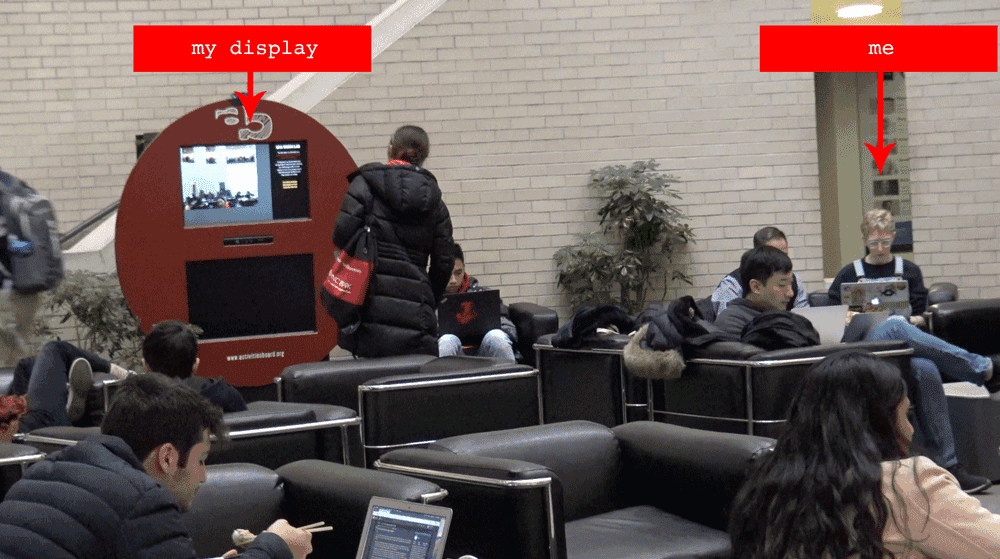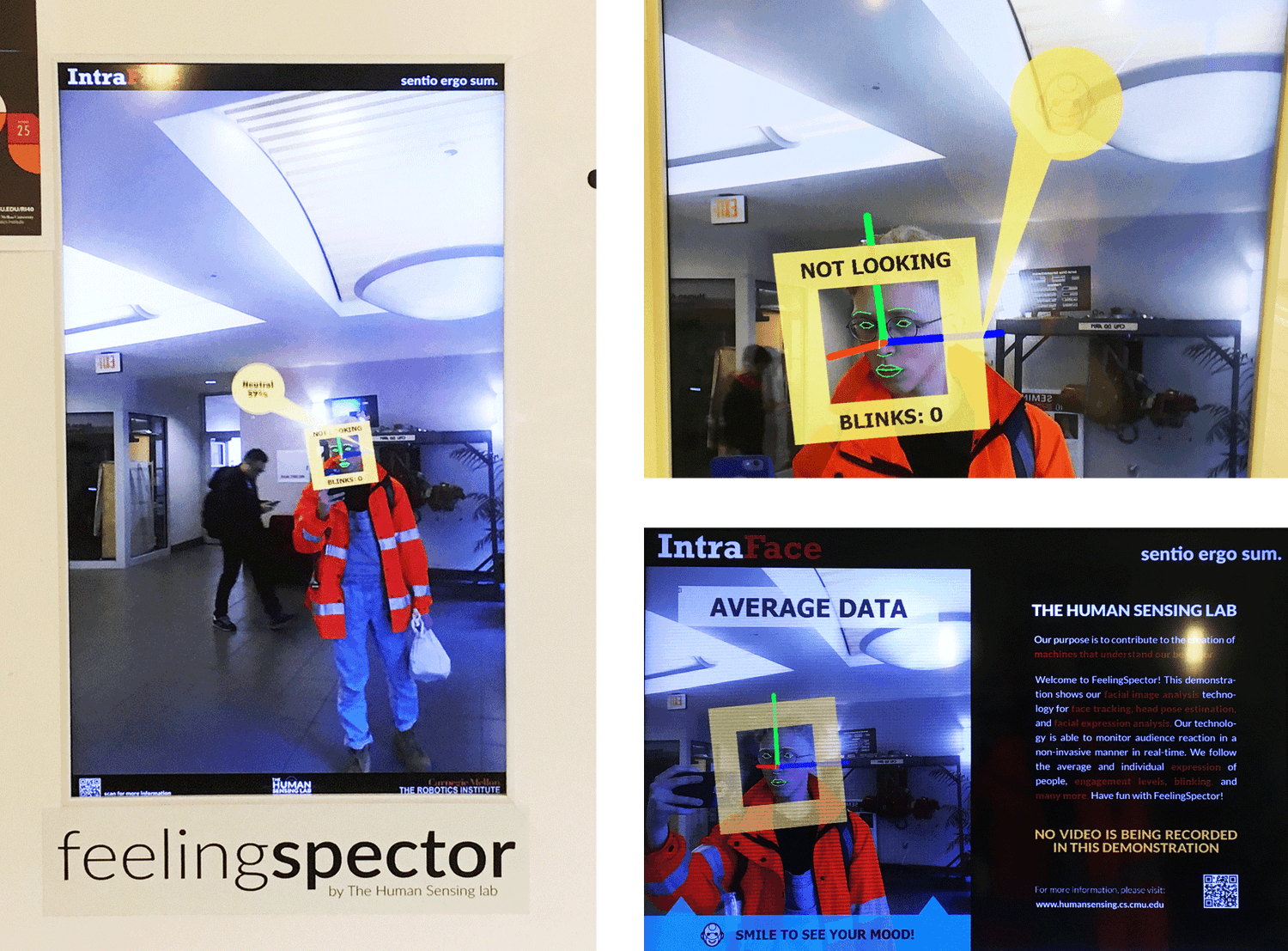CFA Vision Lab
Durational Performance with Custom Software
MEDIUM
Durational Performance
WHEN
Dec, 2020
TOOLS
OpenFrameworks, Wacom Tablet
OVERVIEW
CFA Vision Lab was a durational performance as an AI.
For three hours in the Cohon University Center at Carnegie Mellon University, I performed the job of a machine vision demo, drawing solid color masks over human bodies and objects in a live video feed of the room.

My work was shown on an existing screen in the University Center, so that passersby might believe that the masking was a demonstration of a genuine machine learning algorithm. But not if they looked over to their right; I sat just a few feet away from my display, quietly but frantically tracing them with my mouse.



CONTEXT
Blending in with Computer Vision Demos
This performance was intended to blend in with existing computer vision demos on the Carnegie Mellon campus, notably feelingspector on display in Newell-Simon Hall.
To that end, I chose the existing AB Tech display in CMU University Center to show this work. These demonstrations are, for CMU students, so commonplace that they hardly attract notice.

TECHNOLOGY USED
Built with OpenFrameworks
CFA Vision Lab was developed in C++ with OpenFrameworks, and uses optical flow to “stick” my pixels to the subjects that I masked.
I struggled with the effect of this on people walking quickly through the room, because they would walk away with my colors which I had so carefully drawn over the people sitting more still.

ARTIST STATEMENT
I want this performance to live among the work of other people acting as machines.
Machine learning attracts great attention, from user experience design to insurance. But where businesses lack the training data or the resources to acquire it to produce a machine learning model, they may fall back on human laborers to pretend to be the bots and do the machines’ work of labelling images or steering vehicles. Amazon’s Mechanical Turk is then aptly named. As a service that organizes laborers to sometimes perform this ruse, it fulfills the role of the original mechanical turk, a chess player who disguised himself as a machine that plays chess. Both mark up the price of human labor by disguising it as a machine's.
My performance is an interrogation of the on-campus machine vision demo, which stands for this sale of human labor as machine labor, spearheaded by the university. To perform as this AI—touted by the university—is to acknowledge that the accomplishments of machine-learning are often overstated at the expense of crediting human laborers.
At CMU especially, machine vision demos go unremarked. This allows my performance to walk a thin line between bringing attention to the machine without remarking on the human behind it. Wherever AI is on display but unremarked, there is a paradox between our sensationalizing AI while discrediting the human labor behind it. The human actor and the AI are not separate entities, but one and the mask that it wears.